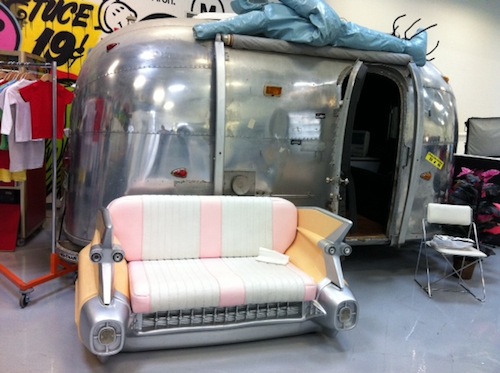I had the good fortune to spend an afternoon at the offices of Chicago based graphic t-shirt printer Threadless recently and their story is one that I never get tired of telling.
Threadless built their business around a now commonplace model known as crowdsourcing. The basic idea behind the model is that you put some defined work out to a community and allow community members to compete to win the project.
This model differs from service offered by organization such as Elance as the projects are not bid on. Project specs and fees are usually agreed upon and then members compete to win the work.
Crowdsourcing has been used very widely in the design industry and has its detractors. In many cases designers are asked to submit fully developed spec work and compete against many other doing the same.
There is a free market argument to support crowdsourcing as well, but Threadless has assembled a number of dynamics that allow them to stay above the pro or con argument while building a multi million t-shirt a year business.

Below are the elements that mesh to make the Threadless model so effective.
Community first
Many crowdsource ideas start with the need to build a community. It’s the classic chicken and egg scenario. You have to come with a robust community in order to get member submissions and you have to have plenty of folks willing to submit projects and pay money.
Threadless started as an online forum for designers and had a supportive community before they ever started to create competitions. This community first mentality is evident today. One casual reading of comments and submission will give you a glimpse into how loyal and committed this community is to the idea of Threadless.
Socialist view
Threadless runs all of the competitions and is the buyer for each of the ten or so designs that get picked each week. This certainly allows them to create stable processes for how each competition is won, but they’ve also chosen to set a specific fee ($2000 + $500 store credit) for each prize.
This set fee model means that world renowned designers (yes they submit too) get the same prize as someone with a brilliant idea, but no design portfolio, if their design is chosen.
This further supports doing work and encouraging community members for the love of the game and removes class from the equation.
Customer forum
Think how many better products would be created and how much smarter those folks over in marketing would be if every time a new product was created it already had thousands of potential customer weigh in on the merits and their desire to purchase the finished product.
Threadless rarely if ever produces a dud t-shirt because the community and potential customer must cast votes of support for a design before it’s ever considered. In essence the Threadless customer produces the company’s product.
Brand filter
Threadless has also installed what I call a brand filter. Sure the crowd, meaning anyone, submits designs and the community votes to bring designs through the clutter of weekly submissions, but the Threadless staff also still makes the final call in a democratic process that helps ensure both quality and mission.
The model becomes the product
Recently, Threadless announced a new initiative, called Threadless Atrium, that is designed as project to take their crowdsource model to others and allow them to use it to produce designs for their needs.
The first two examples of organizations using Atrium can be found on Threadless Causes. The DNA (Demi and Ashton) Foundation is using Threadless to solicit T-shirt designs to raise awareness about child sex slavery, and the Oceanic Preservation Society is crowdsourcing the artwork for its upcoming documentary Singing Planet about mass extinction.
So, what market, industry, product, service or problem could you apply this model to?

